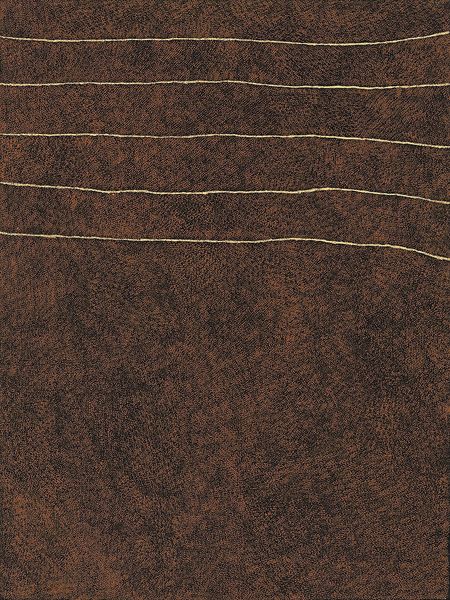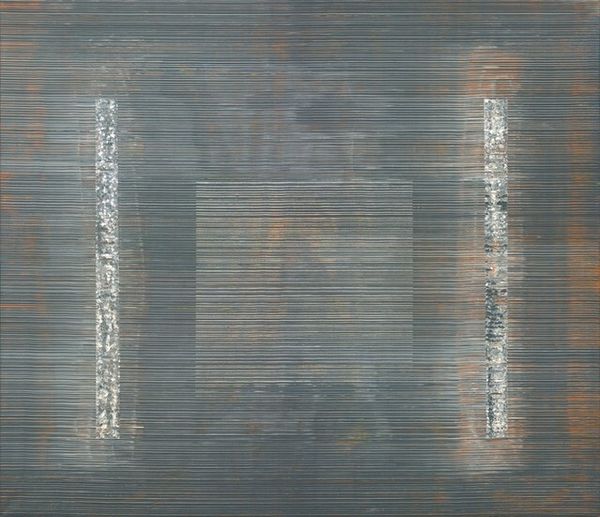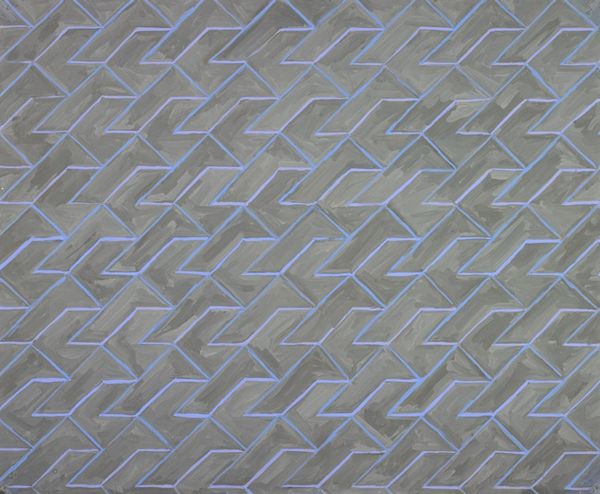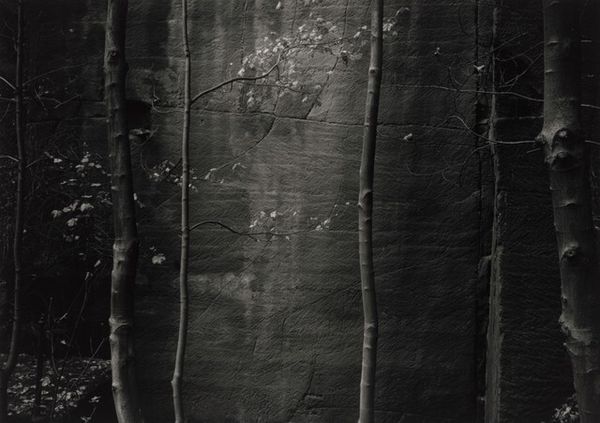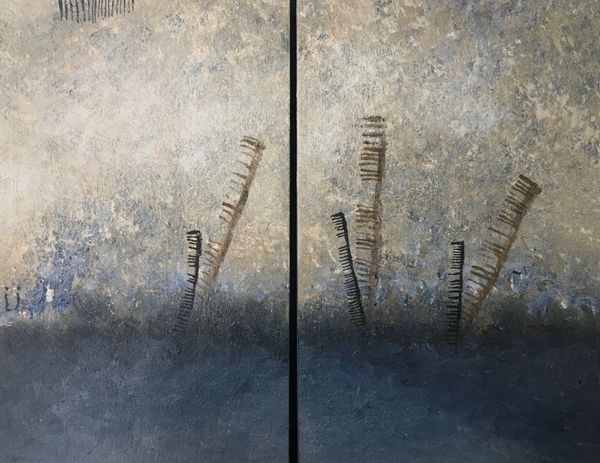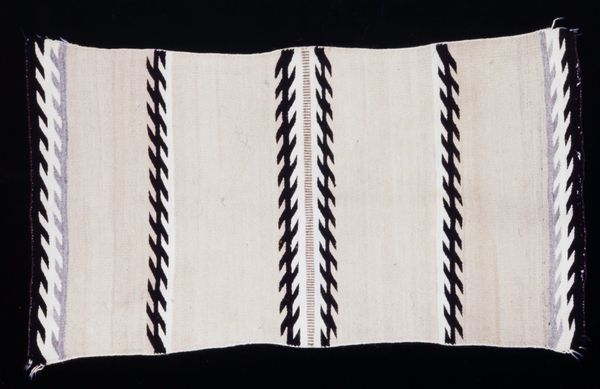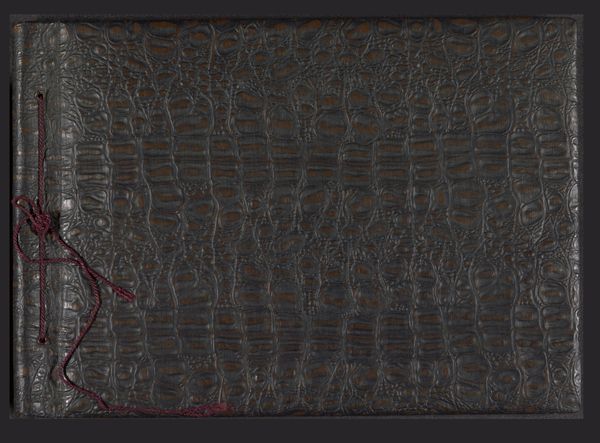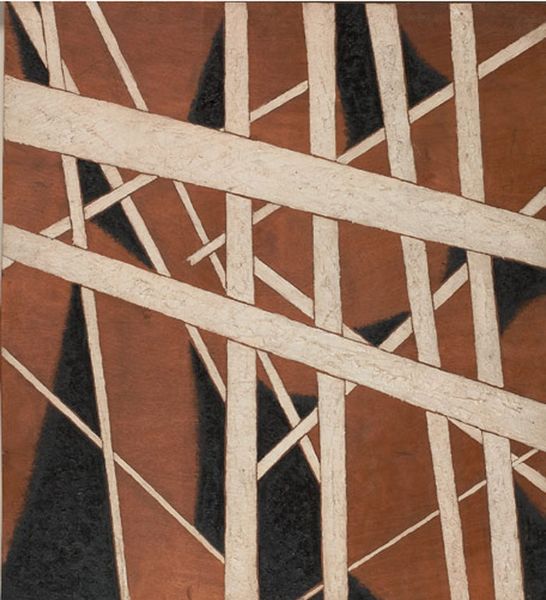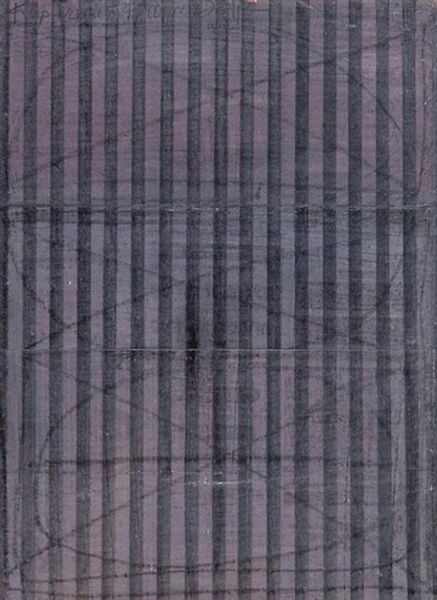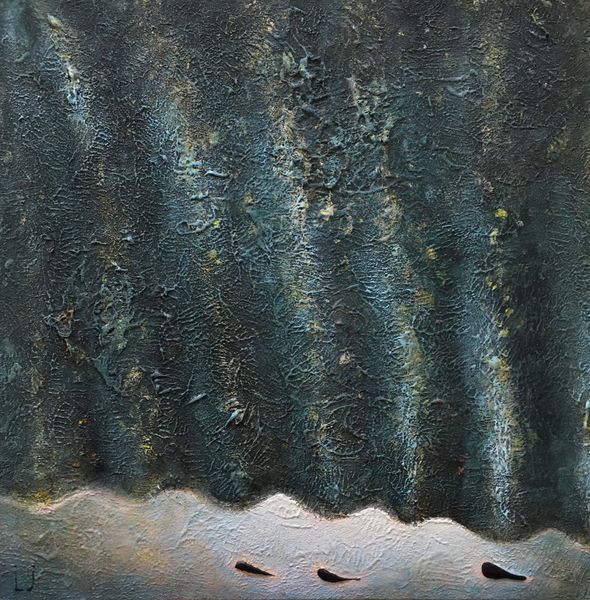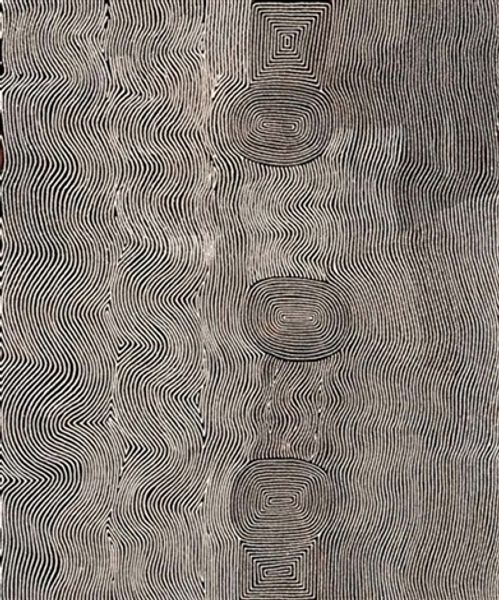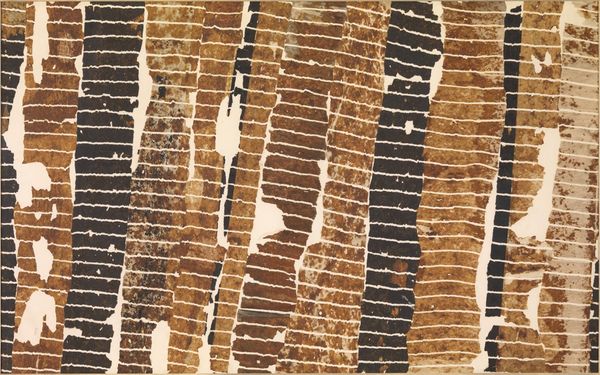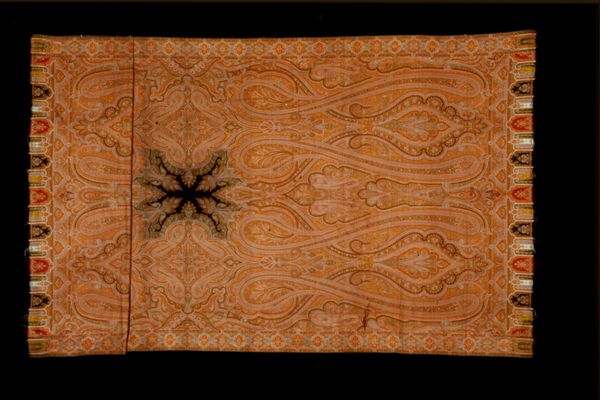
mixed-media, textile
#
neo-conceptualism
#
mixed-media
#
abstract painting
#
water colours
#
textile
#
neo-conceptualism
Copyright: Isa Genzken,Fair Use
Curator: Immediately I'm struck by the repetition of the circles – almost like rosary beads hanging against the patterned textile backdrop. There’s something inherently contemplative about this. Editor: Agreed. And when one considers Isa Genzken's “MLR” from 1992 – an object that seems both industrial and intimately handmade of mixed media – it feels laden with personal history, but obscured by a semi-abstract structure. I am particularly struck by this gridded net-like material on the painted surface. The work evokes ideas of confinement and alienation in urban architecture and design. Curator: I see that, particularly in contrast with the warmth of the colours. They’re earthy, but they’re also distressed, lending an almost ethereal, yet fragmented appearance to the surface, the rings themselves appearing somewhat ghostly. Could it be argued they could act as reminders or echoes? Editor: Precisely. Genzken’s post-conceptual aesthetic frequently destabilises such binaries. Her work asks us to examine our relationship with urban space, to grapple with how architecture might both imprison and facilitate memory. Notice how the repeated circular form creates a visual echo, suggestive of fragmented experiences. Curator: Absolutely, these repetitions invite one to trace connections. They echo the pattern but are somehow 'imprints,' leaving marks both corporeal and mnemonic within the mesh. Genzken, however, maintains her silence concerning the meaning or symbolism in "MLR", further leaving an opening for the viewer's subjectivity and imagination. Editor: That absence of direct explication is key. It pushes us to consider the socio-political anxieties informing art practices of the 90s and to examine the legacy and potential in Pattern & Decoration through Neo-Conceptualism. We as viewers become collaborators, invited to confront questions of identity and alienation. Curator: Reflecting on this, the starkness and visual weight feel paradoxically hopeful. It seems like an offering of survival within an imposed order. Editor: I'm inclined to agree; there's strength to be taken from her use of repeated form to hint at societal structures that seem unbreakable and yet can be destabilised by creative means.
Comments
No comments
Be the first to comment and join the conversation on the ultimate creative platform.
